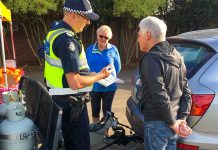Anyone who goes camping understands the limitations that a lack of water can impose. Aside from keeping our bodies hydrated and for those morning mood-enhancing coffees and teas, water is needed for other daily tasks, such as cooking and washing dishes.
Whether you’re on a trip for a holiday, or travelling full-time like us, maintaining water levels is an essential part of camping life. A lack of accessible water, or a suddenly empty tank, is a major concern. It is our number one reason for needing to leave camp.
Regardless of whether diminishing water cuts your stay short or simply adds an additional day-trip to the closest water fill point, there’s no denying the importance of making every drop count when you’re distanced from a plentiful source.
Some cleverly thought-out water saving practices can certainly affect how long your water lasts.
OUR GEAR
There are a number of items we carry in our caravan to aid in maintaining our water levels:
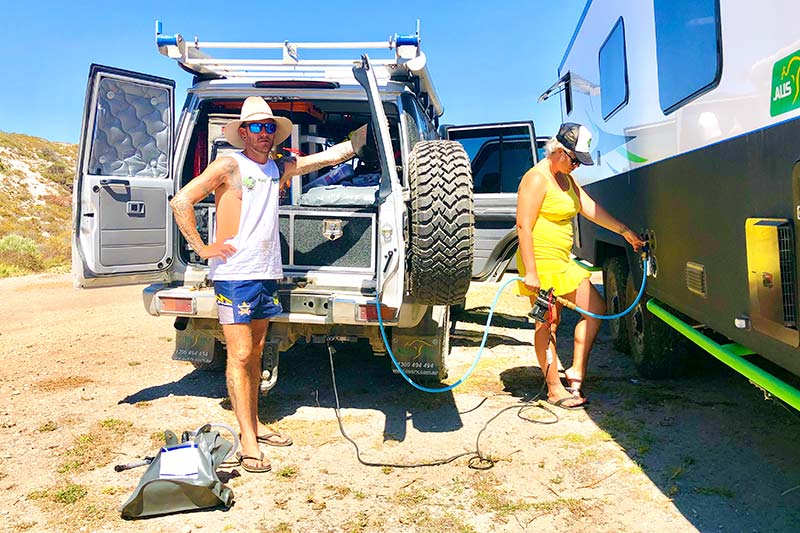
- A 12V pump along with various hoses and fittings, allowing us to run water from any rivers;
- A collapsible bucket the size of a typical laundry basket, which can be used in multiple ways, from catching grey water under the van for ‘recycling’, to acting as a portable bucket to regularly hand-wash used linen and clothing;
- The WikiCamps app for fast information on nearby water fill points; and
- Water bladders (we have two 40L bladders) and a filter for those times when we need to top-up our water levels but don’t want to drag the caravan from its site.
Other items in our water-saving toolbox are good old baby wipes, dry shampoo, wool wash, microfibre towels and a heavy-duty spray bottle.
We also have separate taps for our caravan water tanks, which was an extra we added during the design phase of our caravan. In all our years camping and caravanning, we’ve found it easier if drinking water is kept separate. Having a designated tank that runs to its own tap (with filter) on the kitchen sink is a great way to monitor drinking water levels.
RESOURCEFULNESS
It is important to plan your camps around available water sources. The WikiCamps app not only serves as a fantastic tool for finding the best camping spots in unknown towns, it tells you where to find the closest dump points and potable water.
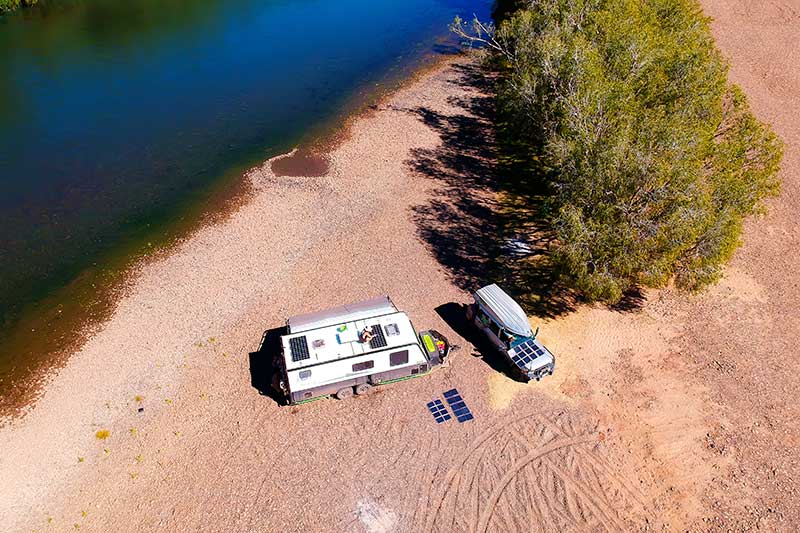
This is our number one tool when planning our routes between destinations, the length of time able to be spent at each campsite, and the level of water-saving practices we all need to adhere to before our next refill.
We have set ourselves up in order to utilise natural water sources whenever possible, recently using a river source at a free camp to fill our washing machine, shower and clean our solar panels by using our 12V pump and water hoses.
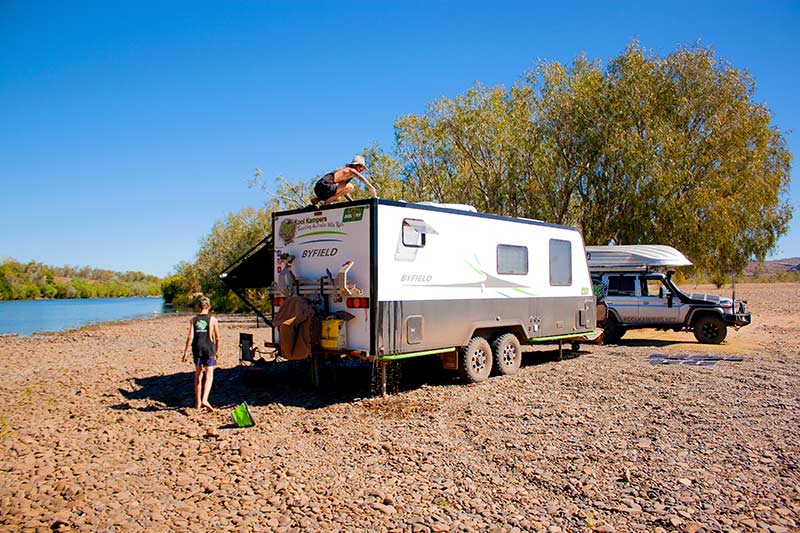
We keep bladders, hoses and the water filter in the back of our 4WD for times when we are away from the caravan but happen to pass water fill points. This allows us to top up an additional 80L of water, which can add a few extra days to a low or no-cost camp.
Recycling is important, too, so we do what we can to give our water more than one use. One way this can be done is to catch your grey water under the van in a bucket, to use later for anything that doesn’t require fresh water, such as extinguishing a campfire at night, or washing the kids’ filthy feet after a big day of exploring.
CARAVAN WATER SAVING PRACTICES
PERSONAL HYGIENE
Using a bucket to wash is an effective way to reduce water usage, as is ensuring you turn off your water during the wetting/washing/rinsing cycle of a shower. Both ways are more than enough to wash the smelly parts of your body without wasting unnecessary water.
We tend to spend a lot of time dipping into waterholes and swimming on our travels, so use the bucket-wash method quite frequently.
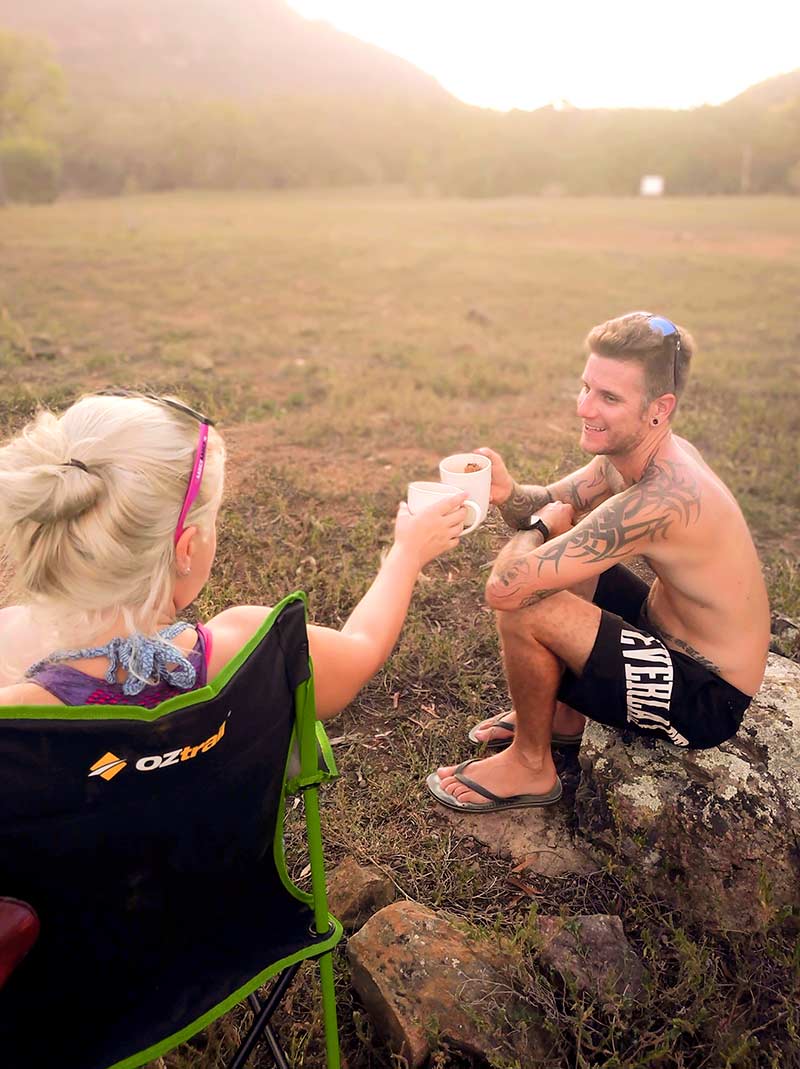
Hair washing only occurs once or twice a week. Being a hairdresser, I know this practice is actually good for our scalps (over-washing promotes higher oil levels on your scalp and can stress hair). To get more ‘wear’ in between washes, the boys wear hats and I use dry shampoo and different styles to keep dirty hair away from our faces.
(If you don’t want to spend on dry shampoo, talc powder does the same thing – absorbing oils from the scalp).
For our teeth we fill a cup, which all five of us use for wetting, brushing and rinsing, reducing the need for more water to end up down the drain.
HANDS, FEET AND FACES
For daily cleaning of hands, feet and faces, we buy a box of cheap baby wipes when going though larger towns as back-up. At other times, we have some water in a bucket that we all wash our dirty feet in before retiring to the van at night.
Baby wipes double as great interior cleaning aids for walls and floors, too. Alternatively, we’ve found a mircrofibre towel and slightly soapy water in a spray bottle cleans well!
WASHING THE DISHES
Our dishwashing practice is to fill no more than half the sink. All dishes for that meal are done with the one lot of water before it is drained. We rarely run the tap to rinse dishes.
LAUNDRY
We have a washing machine in the van, using the ‘wool wash’ setting for our clothes and linen as it doesn’t require the extra rinse cycle. A hand-wash in the collapsible bucket is a regular occurrence when water is limited.
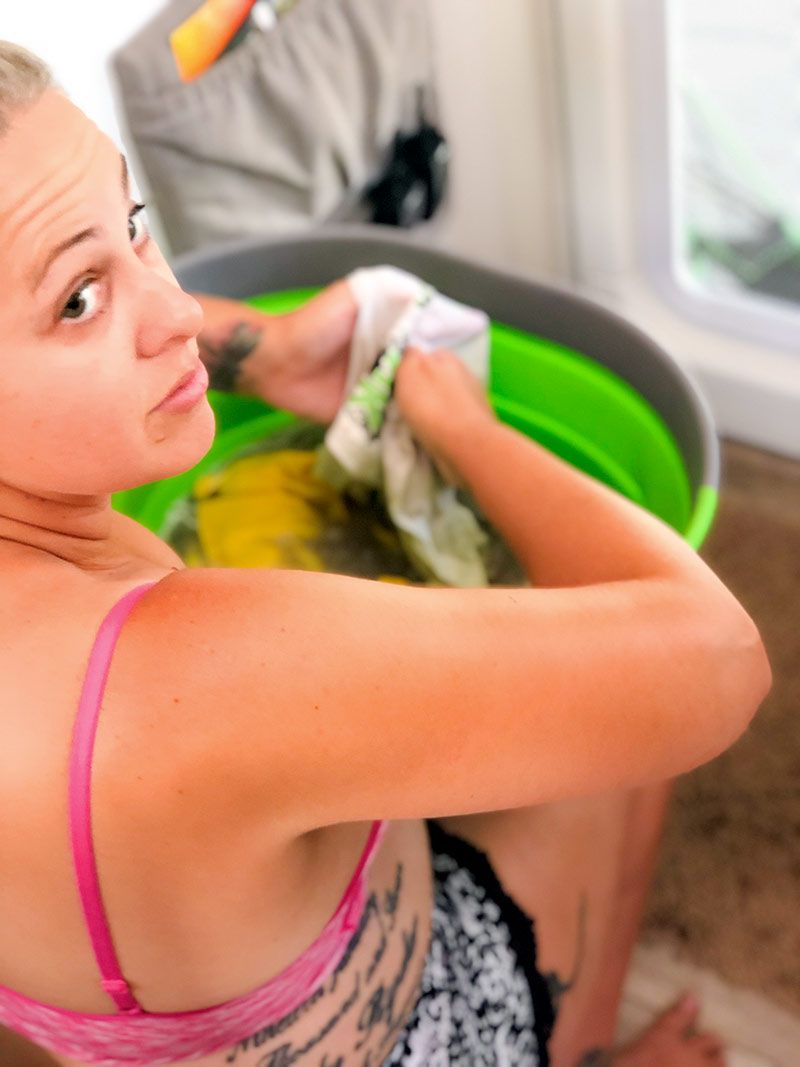
Other times, we run water through hoses and use the 12V pump straight from a river or other water source through our bathroom window and into the washing machine.
TOILET
We use a spray bottle (I have my heavy-duty hairdressing one on board, but any spray bottle will do) to give the toilet bowl a pressured, targeted clean after use. We restrict ‘flushing’ using the AUX switch and button on the toilet, as quite a lot of water is used with each press, and the kids tend to flush multiple times after each use!
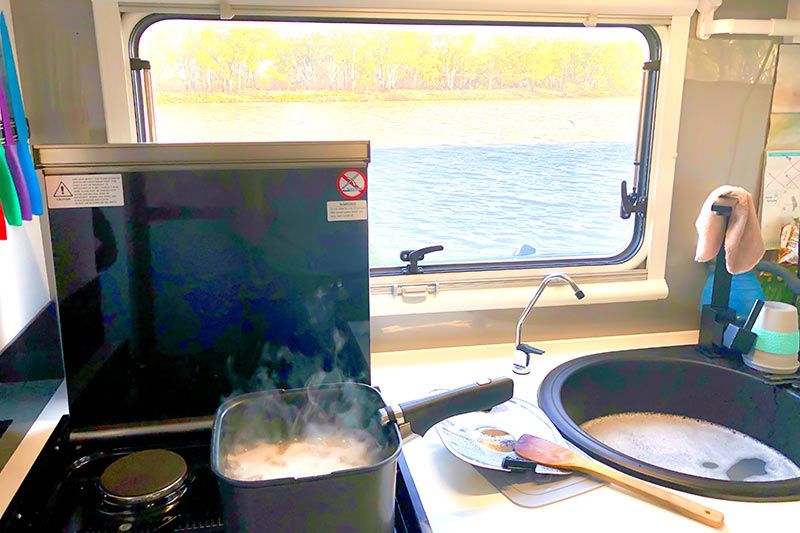
TOP TIPS
- Catch your grey water in a bucket for reuse.
- Carry 20L of spare drinking water for emergencies.
- Plan destinations around the availability of water.
- Use water-saving practices where possible for personal hygiene.
- If you have kids, keep the water pump switch off when not in use – this will prevent little hands from wasting water.
- Ensure you have water-saving tapware in the bathroom and kitchen.
- Use natural water sources wherever possible.
- Use non-potable water for things like laundry.
FOLLOW KOOL KAMPERS
- Website: www.koolkampers.net
- Facebook: www.facebook.com/koolkampers
- Instagram: www.instagram.com/koolkampers
- YouTube: www.youtube.com/c/KoolKampers


